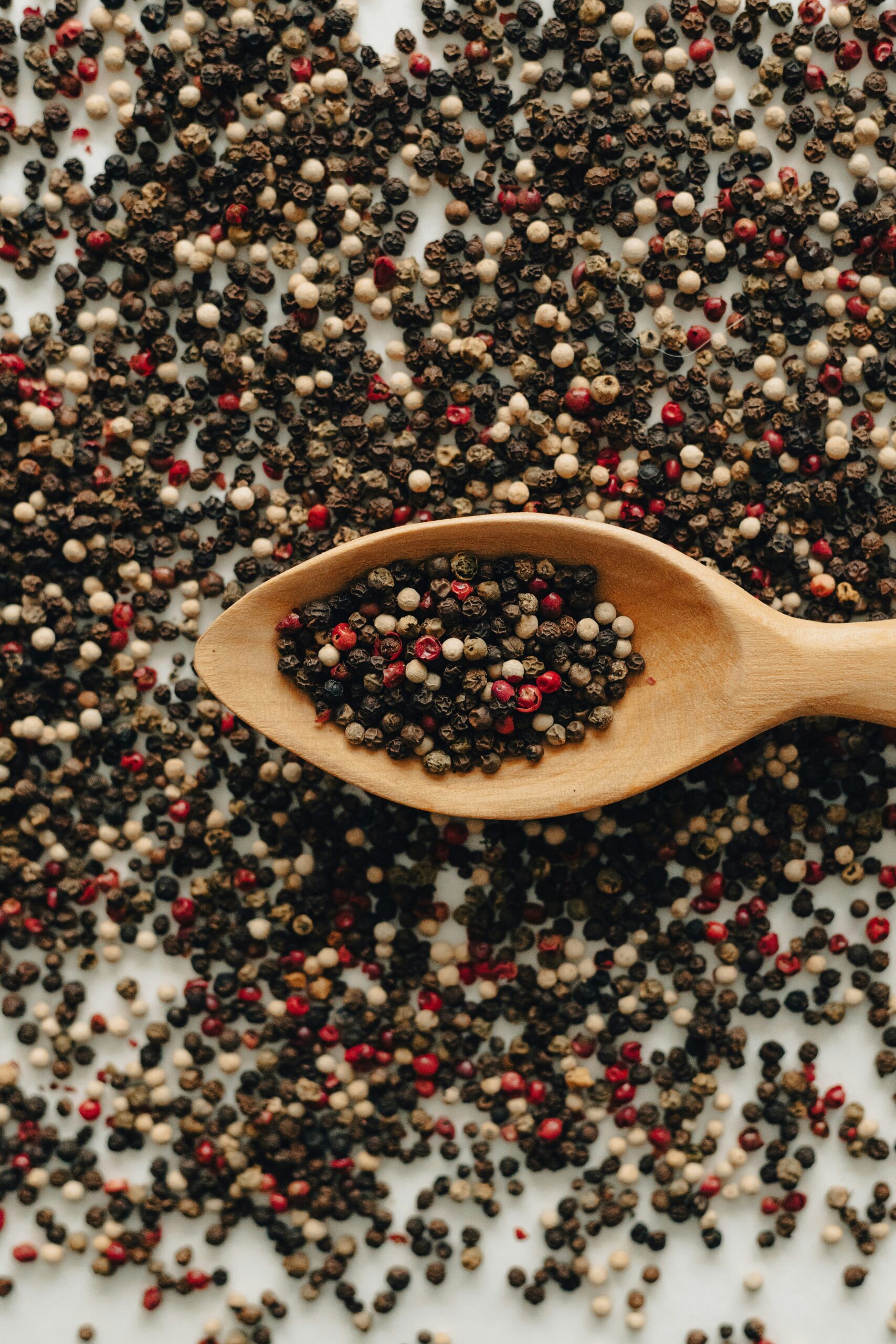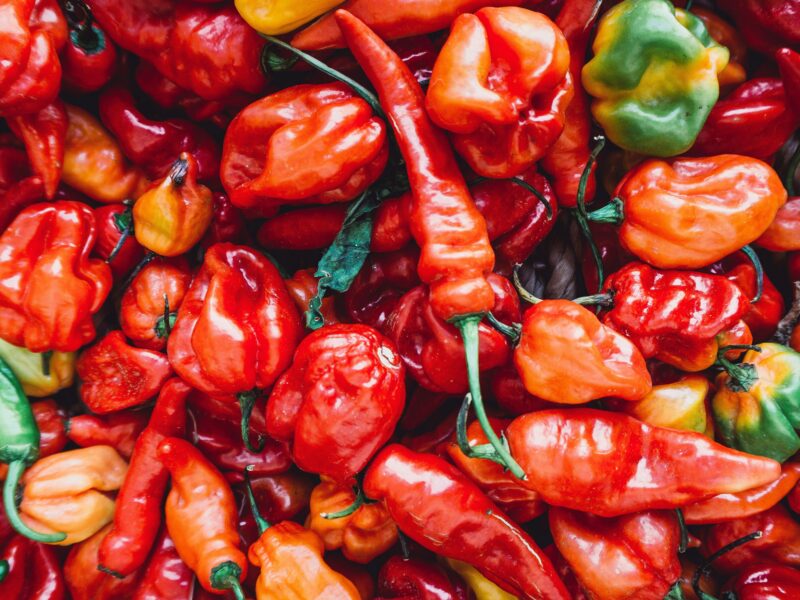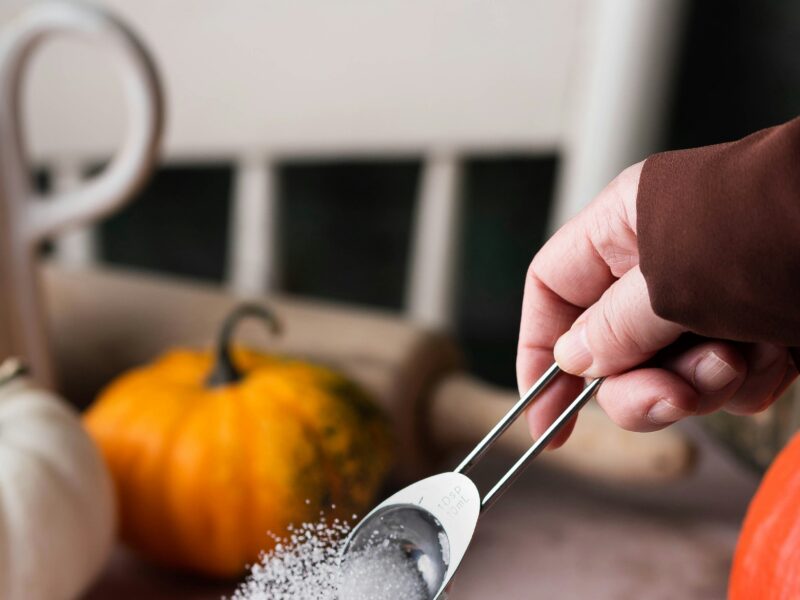Peppercorns are one of the most commonly used spices in kitchens worldwide, adding both heat and complexity to a variety of dishes. The versatile peppercorn comes in many different colors and flavors, each with its unique characteristics. Whether you’re cooking a rich stew, spicing up a salad, or seasoning a steak, understanding the different types of peppercorns can elevate your cooking to the next level. This article will explore the different types of peppercorns, their unique properties, and how to use them in your cooking.
Origin and history of peppercorns
Peppercorns have a long history dating back thousands of years. Native to the tropical rainforests of India, peppercorns were highly valued in ancient trade routes. The spice was known as “black gold” and became so valuable that it was even used as currency in ancient times. Pepper was introduced to Europe by traders in the 6th century, and since then, it has become a staple ingredient in global cuisine. Today, peppercorns are cultivated in many parts of the world, including Southeast Asia, Africa, and South America.
Varieties of peppercorns
Peppercorns come in various colors and flavors, each with a unique taste profile. The different types of peppercorns are produced from the same plant, Piper nigrum, but they are harvested at different stages of ripeness or processed differently. Here’s a look at five popular types of peppercorns:
Black peppercorns
Black peppercorns are the most common and widely used pepper variety. They are harvested when the pepper berries are still green and unripe, then dried in the sun, turning them black and wrinkled. Black peppercorns have a strong, pungent heat and are often used as a seasoning for a wide range of savory dishes. They work well in sauces, meats, soups, and vegetable dishes. The heat from black pepper is sharp and immediate, making it a perfect addition to almost any savory recipe.For a more complex, slightly sweet heat, Ethiopian long pepper (Piper longum) can be used as an alternative in some dishes, adding a unique flavor profile with hints of spice and floral notes.
White peppercorns
White peppercorns are harvested when the pepper berries are fully ripe. The outer layer is removed, leaving only the inner seed, which is dried to produce white peppercorns. White pepper has a more subtle heat and a slightly earthy, mellow flavor compared to black pepper. It is often used in delicate dishes, such as white sauces, fish, and mashed potatoes, where the visual appearance of black pepper could be undesirable. It’s also popular in Asian cuisine, where it’s used in stir-fries and soups.
Green peppercorns
Green peppercorns are harvested when the pepper berries are still immature and green. They are typically preserved in brine or vinegar, though they can also be dried. Green peppercorns have a fresher, milder taste than black or white peppercorns, with a slight fruity flavor and a soft, less pungent heat. They are often used in sauces like peppercorn sauce or pickled for use in various Mediterranean and Southeast Asian dishes. Green peppercorns are a great addition to salads, seafood, and creamy sauces.
Pink peppercorns
Pink peppercorns are not technically true peppercorns but come from the Schinus molle plant, also known as the Brazilian pepper tree. They are small, round, and pink in color, offering a mild, slightly sweet, and fruity flavor with a touch of heat. Pink peppercorns are often used as a garnish or in spice blends, providing a delicate color and a more subtle heat compared to black pepper. They pair well with seafood, poultry, and fruits, and are often used in salad dressings and sauces.
Szechuan peppercorns
Szechuan peppercorns are another type of peppercorn that is not related to the Piper nigrum plant. They come from the Zanthoxylum tree and are a key ingredient in Chinese cuisine, especially in Szechuan dishes. They are unique because they don’t provide a heat similar to black pepper but instead create a tingling, numbing sensation on the tongue, often referred to as “má.” Szechuan peppercorns have a slightly citrusy flavor and are used in stir-fries, sauces, and spicy meat dishes. They pair well with garlic, ginger, and chili.
How to choose the right peppercorn for cooking
Choosing the right peppercorn depends on the type of dish you are preparing and the flavor profile you desire. Black peppercorns are your go-to for almost any savory dish, adding a strong, sharp heat. White peppercorns are ideal for lighter dishes or when you want to avoid black specks in your food. Green peppercorns are excellent for more delicate, fresh flavors, while pink peppercorns bring a sweet, aromatic quality to dressings and salads. Szechuan peppercorns are perfect for adding a unique tingling sensation to spicy stir-fries or meat dishes.
Best cooking tips when cooking with pepper
- ✔Use freshly cracked pepper for a stronger, more aromatic flavor.
- ✔Adjust the heat by adding pepper in stages while cooking.
- ✔Combine black and white pepper for a more complex flavor profile.
- ✔Pair pepper with salt to enhance its sharpness and balance the dish.
- ✔Experiment with different types of pepper for unique flavors in your cooking.
So, what would cooking be without peppercorns?
Peppercorns are more than just a seasoning—they’re an essential ingredient that brings heat, depth, and complexity to your dishes. From the bold, pungent flavor of black pepper to the mild, fruity taste of pink peppercorns, each variety offers something special for every culinary need. Understanding the different types of peppercorns and their uses will allow you to experiment with new flavors, enhancing your cooking in ways you never thought possible. So, next time you’re cooking, don’t forget the power of peppercorns to spice up your meal.


